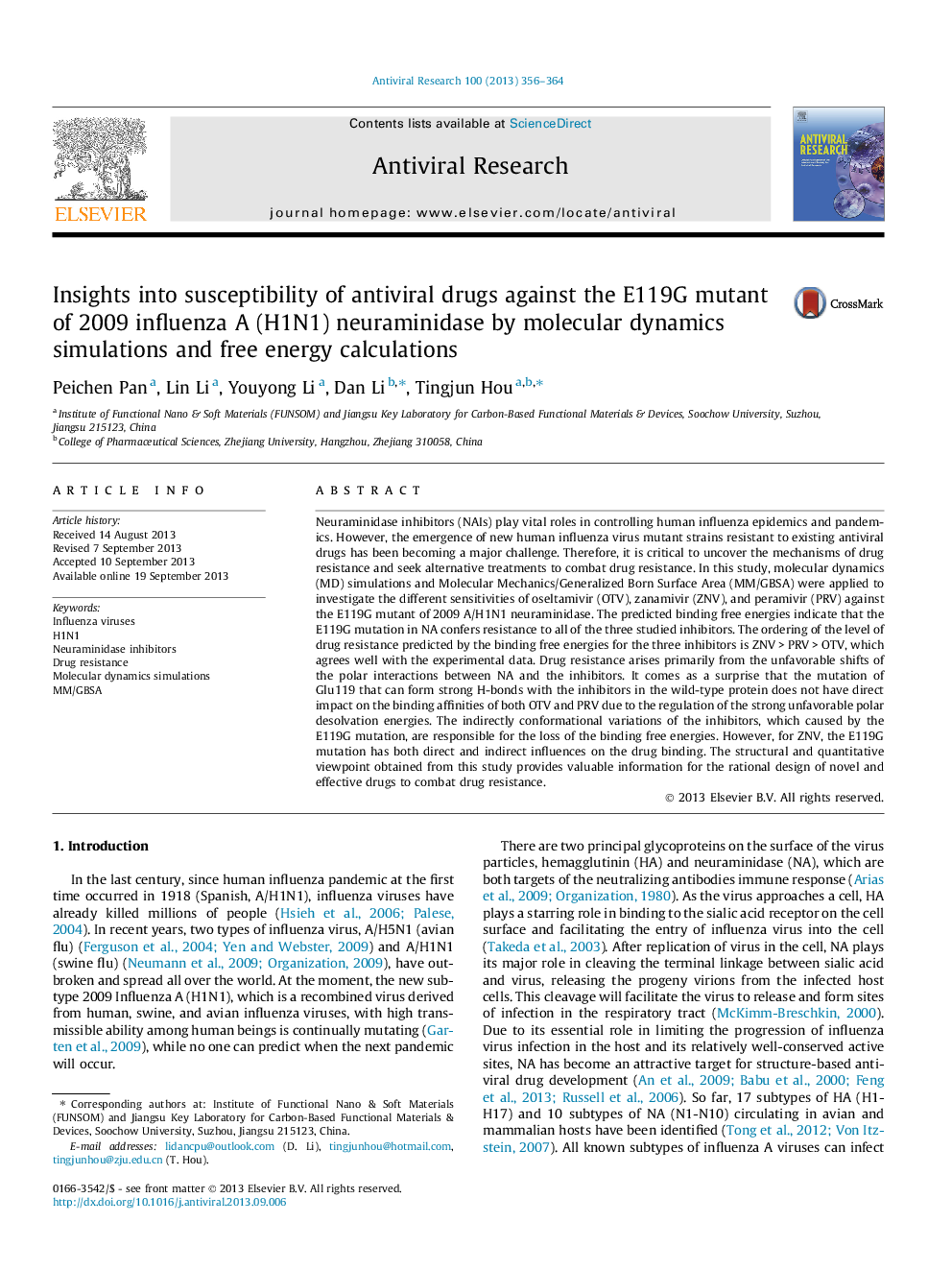| کد مقاله | کد نشریه | سال انتشار | مقاله انگلیسی | نسخه تمام متن |
|---|---|---|---|---|
| 5822322 | 1117939 | 2013 | 9 صفحه PDF | دانلود رایگان |

- The ordering of the level of drug resistance was successfully predicted by MM/GBSA for the studied drugs.
- The unfavorable shifts of the polar interactions between NA and the drugs were found to be primarily responsible for drug resistance.
- The resistance mechanisms caused by the E119G mutation for the studied drugs were elucidated.
Neuraminidase inhibitors (NAIs) play vital roles in controlling human influenza epidemics and pandemics. However, the emergence of new human influenza virus mutant strains resistant to existing antiviral drugs has been becoming a major challenge. Therefore, it is critical to uncover the mechanisms of drug resistance and seek alternative treatments to combat drug resistance. In this study, molecular dynamics (MD) simulations and Molecular Mechanics/Generalized Born Surface Area (MM/GBSA) were applied to investigate the different sensitivities of oseltamivir (OTV), zanamivir (ZNV), and peramivir (PRV) against the E119G mutant of 2009 A/H1N1 neuraminidase. The predicted binding free energies indicate that the E119G mutation in NA confers resistance to all of the three studied inhibitors. The ordering of the level of drug resistance predicted by the binding free energies for the three inhibitors is ZNVÂ >Â PRVÂ >Â OTV, which agrees well with the experimental data. Drug resistance arises primarily from the unfavorable shifts of the polar interactions between NA and the inhibitors. It comes as a surprise that the mutation of Glu119 that can form strong H-bonds with the inhibitors in the wild-type protein does not have direct impact on the binding affinities of both OTV and PRV due to the regulation of the strong unfavorable polar desolvation energies. The indirectly conformational variations of the inhibitors, which caused by the E119G mutation, are responsible for the loss of the binding free energies. However, for ZNV, the E119G mutation has both direct and indirect influences on the drug binding. The structural and quantitative viewpoint obtained from this study provides valuable information for the rational design of novel and effective drugs to combat drug resistance.
Journal: Antiviral Research - Volume 100, Issue 2, November 2013, Pages 356-364